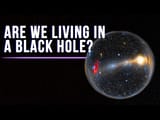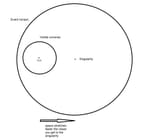>>510143951
>>510144579
The discrepancy you two are having is that one is assuming the in-falling matter at the edge of the universe is constantly adding "new matter" to the universe, thus increasing total mass. This is incorrect. The absolute amount of mass in the universe is static. However, this does not mean new in-falling mass isn't accruing at the edge, or horizon, of the universe; it simply means it has already been calculated into the total amount of gravitation of the universe. This is a consequence of human (or possibly all conscious) perception as it can apparently only process moment to moment, whereas all of time and space exists within a singular "mega-moment" that is imperceptible as a whole and may only be pieced together -- at least by "us humans". Time and space both appear to us as fragments within and across our perceptual modalities but, they are indeed one and whole.
As such, any energy-information near enough to consciously perceptible inputs (thus perceived earlier) would be cooled enough to be perceived. In-falling matter will be quite, quite far away. (quite).
In regards to OP, my "guess" is actually a discrepancy between the masses of the two initial colliding objects that formed the exterior black hole.
The reason we get dark matter and dark energy is because they are perceptual artifacts. The edge of the universe is a 380k ly bound of boiling particle soup before it light may even solidify. Then you gotta calculate the hawking radiation, or how much mass evaporates into the anterior universe, because it depends on the surface volume of the anterior bh mass, god cutting edge physics is really frustrating.
Did I even mention singularities being critical thresholds of scalar re-normalization? ffs
















